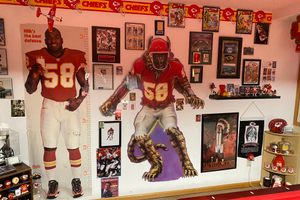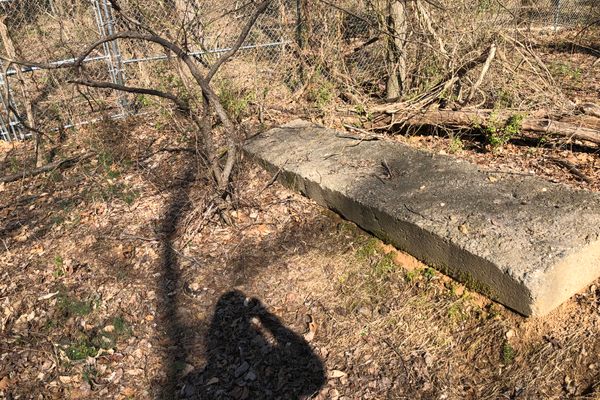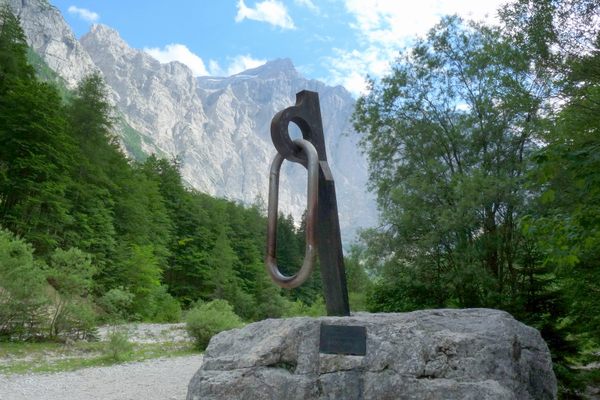About
Often called Atomic Annie, the M65 Atomic Cannon was a towed artillery piece designed and built by the United States to fire a nuclear warhead from the ground. Developed in the early 1950s, Atomic Annie was rolled out in the European and Korean theaters in 1953.
Based on the German K5 railroad gun, Atomic Annie was a project originally conceived by engineer Robert Schwartz. Approved by the Pentagon, the development effort was carried out over three years so that the weapon could be shown off during Dwight Eisenhower's inaugural parade in January of 1953.
So large, it takes two specially designed tractors, each capable of independent steering, to move Atomic Annie from one place to another. This is the same method that's deployed in extra-long fire engines, where one driver steers from the front and another from the rear. At 47 tons, the cannon could only travel at a maximum speed of 35 mph. At the time of its conception, Atomic Annie was considered highly mobile compared to other artillery used at the time.
On May 25, 1953, at 8:30 a.m. local time, Atomic Annie fired the first and only nuclear shell to be launched from a cannon in a test carried out at a Nevada Test Site and attended by the Chairman of the Joint Chiefs of Staff Adm. Arthur W. Radford and Secretary of Defense Charles E. Wilson. After the test went off without a hitch - the shell traveled for approximately seven miles before detonating - at least 20 Atomic Annies were manufactured for nearly $1 million each. The weapon was retired 10 years later, in 1963.
In 1974 the commander of Fort Riley's 1st Infantry Division--the Big Red One of movie fame--managed to acquire the gun, for installation and display on post. He chose the site on the southern side of I-70, overlooking the airfield and clearly visible to potential visitors. The task of bringing the gun to the site fell to the 34th Engineer Battalion, which had to coordinate with numerous state and local officials, as well as local farmers, to move the gun to the site in 1975.
If you drive west of Kansas City on I-70, you'll eventually notice a large bluff with a huge cannon sitting on top, exit 301. A nearby park shelter provides visitors with information and a plaque commemorating Atomic Annie's role in military history. There is a modest uphill trail, past an M1 155 mm Howitzer and other guns and vehicles used by the United States over the years, and at the top sits one of the surviving M65s. The only Atomic Annie to be fired, however, is at Fort Sill in Oklahoma.
Related Tags
Know Before You Go
It is open to the public and going through improvements right now (7/2024)
Community Contributors
Added By
Published
February 28, 2011
Sources
- Wikipedia: M65 Atomic Cannon: http://en.wikipedia.org/wiki/M65_Atomic_Cannon
- 3 o'Clock AM: "As seen in Kansas: Atomic Cannon" (November 2008): http://3oclockam.blogspot.com/2008/11/as-seen-in-kansas-atomic-cannon.html
- Global Security: M65 Atomic Cannon: http://www.globalsecurity.org/military/systems/ground/m65.htm
- Damn Interesting: Atomic Annie and Her Nuclear Projectile: http://www.damninteresting.com/atomic-annie-and-her-nuclear-projectile
- my father was the 34th Engr BN commander in 1974-75, and I watched this all take place.
- http://www.jcpost.com/2017/07/07/freedom-park-reopened/






























